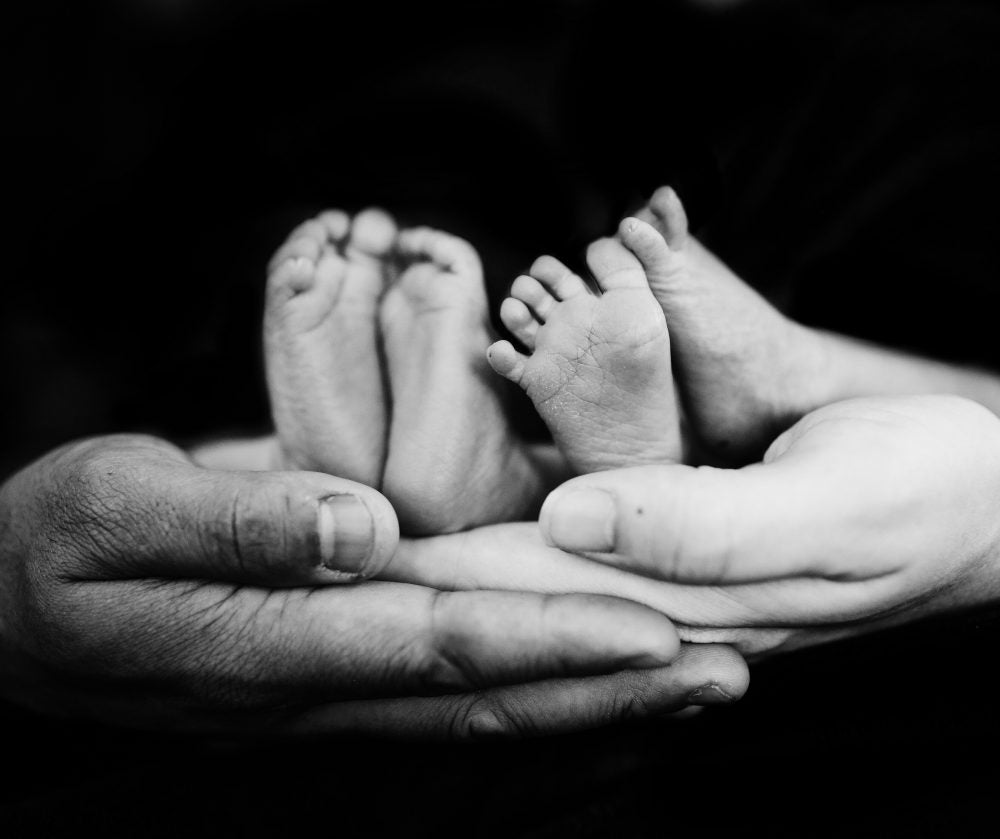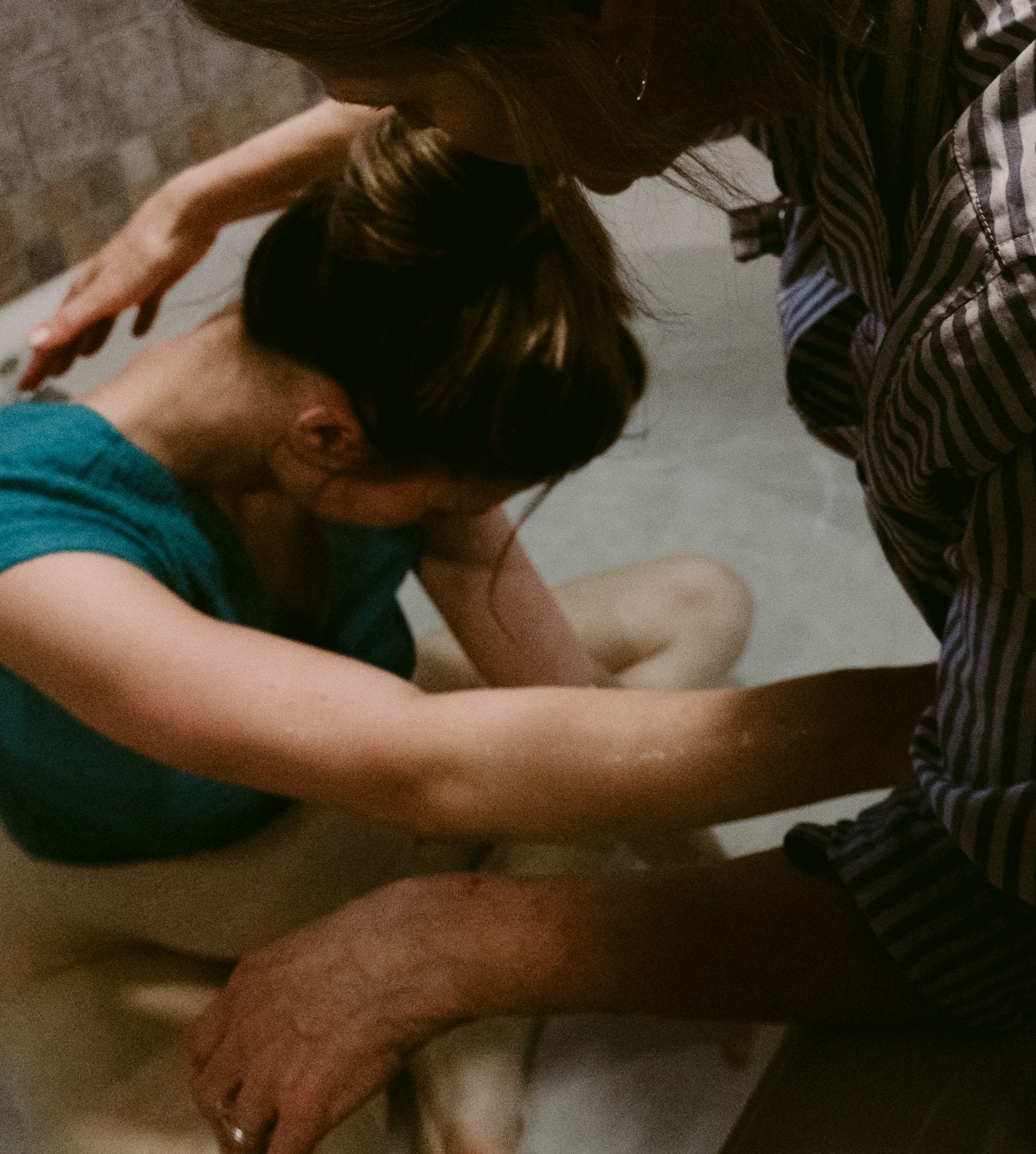“You know, I’m still overwhelmed by the thought of having two babies at once!” a patient recently said to me in the practice.
It is entirely legitimate that the joy of having two children is not immediately overwhelming, but that such news is also accompanied by worries, fears and uncertainty.
There are currently around 1,200 twin pregnancies registered in Austria. It is generally assumed that 1 in 86 pregnancies is a twin pregnancy. For other multiple births, such as triplets and quadruplets, the rate is 1:7,400 and 1:640,000.
Double happiness – challenging but beautiful
A twin pregnancy is generally very positive news for the parents, but experts consider it to be a high-risk birth. The risk of premature birth, the development of pregnancy-related illnesses such as diabetes, preeclampsia or problems with the placenta is increased in a twin pregnancy.
From an obstetric point of view, this represents an additional challenge for the midwife and obstetrician.
Even the gynecologists' support during pregnancy requires clarification of certain parameters in order to accompany the pregnancy and subsequently the birth under optimal conditions.
Unpleasant symptoms such as tiredness, or towards the end of the pregnancy especially sleep disorders, immobility or shortness of breath are of course more common and more severe in multiple births.
Not all twins are the same
There are many different types of twins (Gemini). What most people know are identical and fraternal twins.
In the latter case, two fertilized eggs develop into one child. This affects about two thirds of twin births. These two children are therefore siblings who are in the mother's womb at the same time.
It is much rarer, and therefore very special, to have so-called identical twins. This affects around 1/3 of twins. They look very similar because they have the same genetic makeup - and of course they are always the same gender.
The earlier the fertilized egg splits into twins, the more "separated" the two are in the womb. It is therefore much more common for twins to have two extra placentas and two extra amniotic sacs, or even a shared placenta and two separate amniotic sacs.
The rarest form of twin conception is the so-called monochorionic-monoamniotic twin conception. This means that both children share a placenta and a gestational sac. This only occurs in about 1% of all twins. However, this form is also the one that requires the most support and monitoring and is therefore not considered a vaginal birth these days due to the risk involved.
Depending on the position of the child, full-term births (from the full 37th week of pregnancy) between twins are possible both spontaneously and by caesarean section. These deliveries are best carried out in a level 1 hospital with – in case of emergency – many helping hands and, above all, different professional groups. The prerequisite for this is a healthy, normal twin pregnancy and both children or at least the first baby in the head position.
"It is possible to breastfeed twins. Nature ensures that there is enough breast milk available."
Vaginal twin birth – good birth planning reduces fears
Under these conditions, a vaginal birth is relatively normal. However, a twin birth can take a little longer due to the overstretched uterus already under strain from pregnancy.
The woman comes to the hospital with regular contractions or ruptured membranes and is cared for mainly by the midwife until the birth. A senior doctor and an assistant doctor are then present at the birth. The women are also allowed to adopt various birthing positions as long as the baby's heartbeat is OK and to give birth in various birthing positions. For example, kneeling or sitting births are often chosen, or birthing on the side is also possible.
Once the first baby is born, it is first placed briefly on the mother's stomach and the umbilical cord is cut more quickly. This is necessary because, shortly after the pressure is relieved by the birth of the first child, it must be ensured that the child is in a position suitable for birth and that the remaining placenta of the second child is still well supplied. The father is then allowed to hold his first child in the delivery room while the second baby makes its way into the world within the next hour (usually in the next 20 minutes).
Sometimes it can happen that the second baby drifts into a transverse position or the heartbeat is no longer normal. In this case, an emergency caesarean section may be necessary.
Therefore, it makes a lot of sense for doctors to plan the birth in the outpatient clinic of the hospital where the baby is delivered, as well as having a birth planning discussion with a midwife. This can help to eliminate or reduce uncertainties, false reports and fears.
Postpartum with two babies – get helping hands
In this situation, it makes sense to get help to support the family in the initial period in addition to midwifery care. Family members or friends are often indispensable for the young mother, because the extra effort - just to meet basic needs - is considerable.
It is certainly possible to breastfeed twins. Nature ensures that there is enough breast milk available. Either both at the same time (tandem breastfeeding) or each child individually. Depending on the time of day or night, both have their advantages and disadvantages. For example, if the children drink one after the other, you can breastfeed them lying down and rest a little or even sleep.
If the babies come at the same time, tandem breastfeeding allows for quicker feeding. Twins – provided they are allowed to sleep in the same bed – generally accept sleeping in a side bed or cot more quickly than singletons.
In order to provide the best possible support to parents of twins and especially to the breastfeeding mother, everyday tasks such as eating, housework, shopping, etc. should be supported. I recommend that parents start looking for such helpers among their relatives and friends while they are still pregnant.
An additional challenge for parents-to-be of twins is the financial situation. You need lots of things, such as a cot, a car seat, clothes, diapers, etc. in duplicate. You also need more special things like a twin stroller or a twin nursing pillow. These days it is often very easy to get used items from other twin families on the Internet. Tips from like-minded people are also usually very helpful for parents-to-be.
Support for Parents of Twins in Austria
Public Support in Austria
There are also additional support measures available from the public sector, such as the multiple birth supplement for parental allowance.
In the case of multiple births, maternity protection is extended from 8 weeks to 12 weeks after the birth.
Despite the somewhat greater challenge of having two babies at once, one can be very happy and in good spirits about such a double gift from nature!
“...your baby is about to be born with a sibling and will be connected to them forever!” I tell my patient at the end of our conversation, thinking of my own twin sisters.








Leave a comment
All comments are moderated before being published.
This site is protected by hCaptcha and the hCaptcha Privacy Policy and Terms of Service apply.